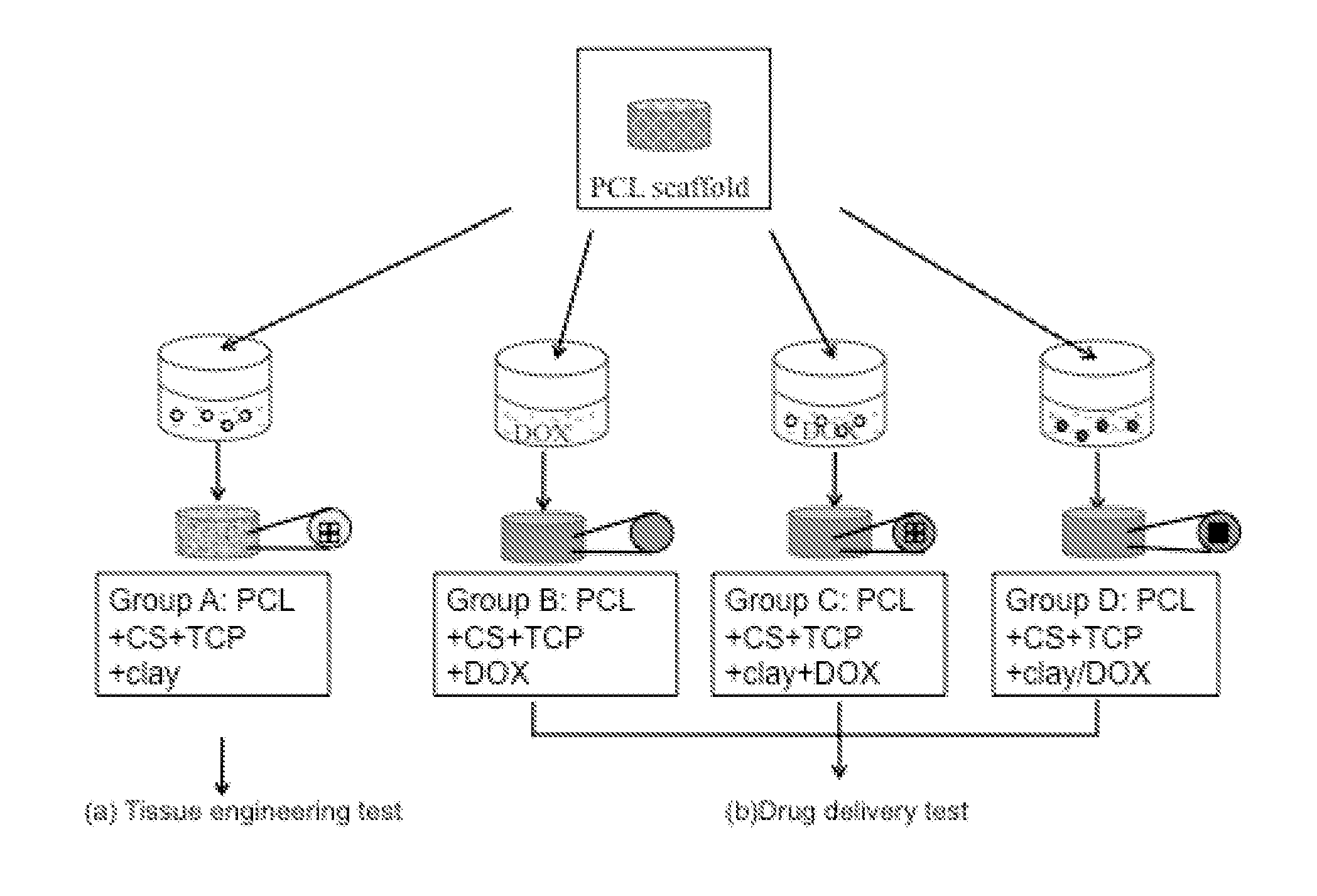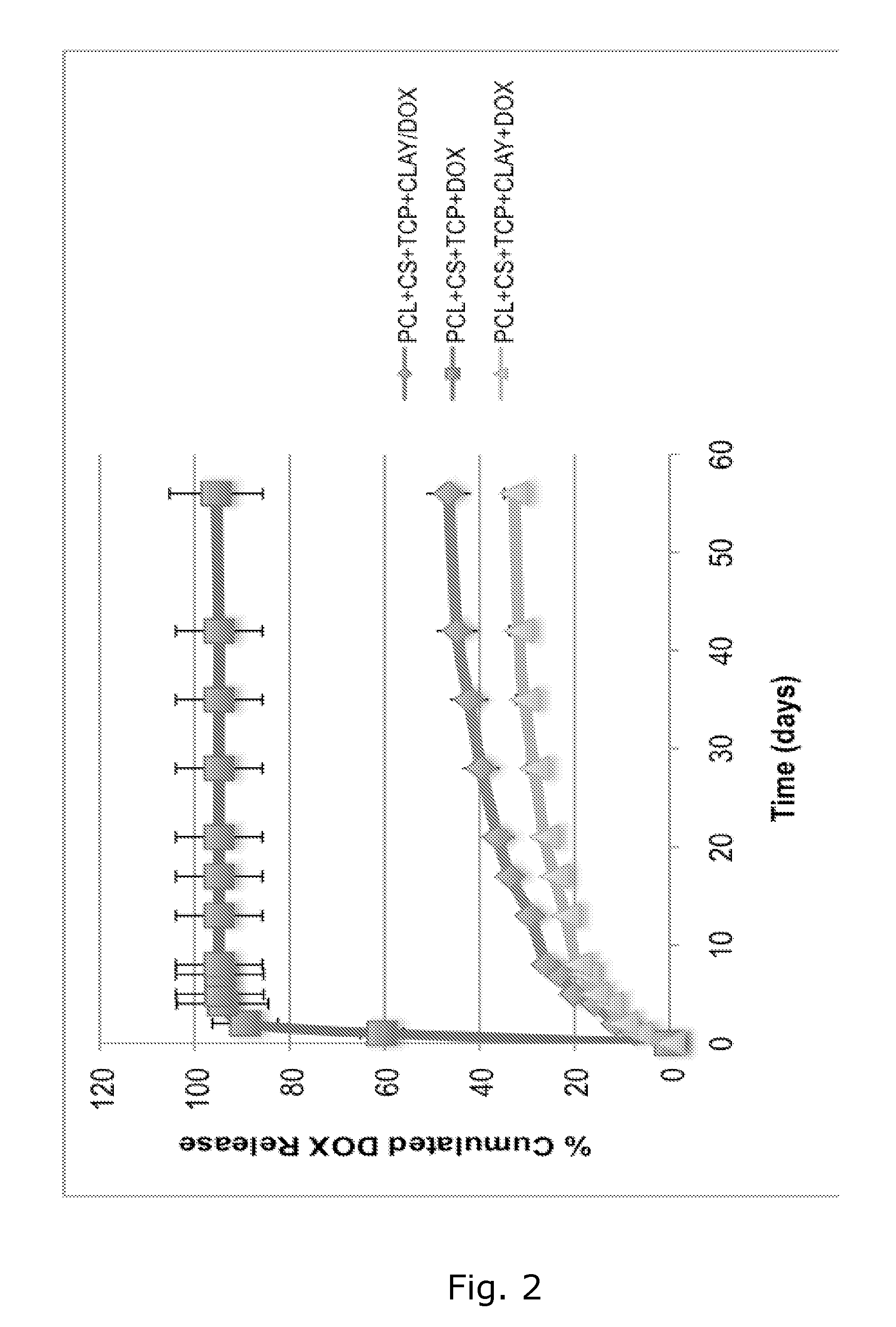Tissue scaffold with controlled drug release
a tissue scaffold and drug release technology, applied in the field of three-dimensional hybrid scaffolds, can solve the problems of difficult control of drug release profiles, restricted treatment with doxorubicin, and insurmountable challenges to the current gold standard treatment of bone repair, and achieve the effect of rapid prototyping and tissue ingrowth
- Summary
- Abstract
- Description
- Claims
- Application Information
AI Technical Summary
Benefits of technology
Problems solved by technology
Method used
Image
Examples
examples
[0079]The objective of this study was to develop a biocompatible implant that would be placed at the defect site during tumor resection surgery. This construct would provide adequate structural (mechanical) support, locally, provide a controlled sustained release of a chemotherapeutic agent, and eventually promote tissue ingrowth.
Materials and Methods
Materials
[0080]The nanoclay used in this study was from Southern Clay Products, Inc., Germany (Cloisite Na+, Lot: 07F28GDX-008). Chitosan (Chitopharm M) with 75-85% degree of deacetylation was obtained from Cognis. Polycaprolactone (MW=50 kDa) was from Perstorp, UK. Beta-tricalciumphosphate nanocrystals (TCP, Lot: TCPCH01) was purchased from Berkeley advanced bimaterials, Inc., USA. Doxorubicin hydrochloride (DOX) was from Sigma, Denmark.
Scaffold Fabrication
PCL-Base Scaffold Manufacture
[0081]Scaffolds were made from PCL by fused deposition modeling with a BioScaffolder (SYS+ENG GmbH, Germany). Cylindrical scaffolds with a diameter of 10...
PUM
 Login to View More
Login to View More Abstract
Description
Claims
Application Information
 Login to View More
Login to View More - R&D
- Intellectual Property
- Life Sciences
- Materials
- Tech Scout
- Unparalleled Data Quality
- Higher Quality Content
- 60% Fewer Hallucinations
Browse by: Latest US Patents, China's latest patents, Technical Efficacy Thesaurus, Application Domain, Technology Topic, Popular Technical Reports.
© 2025 PatSnap. All rights reserved.Legal|Privacy policy|Modern Slavery Act Transparency Statement|Sitemap|About US| Contact US: help@patsnap.com



